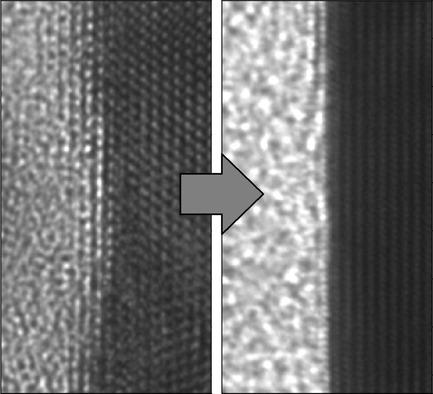当前位置:
X-MOL 学术
›
Phys. Status Solidi B
›
论文详情
Our official English website, www.x-mol.net, welcomes your
feedback! (Note: you will need to create a separate account there.)
Limiting Damage to 2D Materials during Focused Ion Beam Processing
Physica Status Solidi (B) - Basic Solid State Physics ( IF 1.5 ) Pub Date : 2020-07-29 , DOI: 10.1002/pssb.202000318 Anton Bay Andersen 1 , Abhay Shivayogimath 2 , Tim Booth 2 , Shima Kadkhodazadeh 1 , Thomas Willum Hansen 1
Physica Status Solidi (B) - Basic Solid State Physics ( IF 1.5 ) Pub Date : 2020-07-29 , DOI: 10.1002/pssb.202000318 Anton Bay Andersen 1 , Abhay Shivayogimath 2 , Tim Booth 2 , Shima Kadkhodazadeh 1 , Thomas Willum Hansen 1
Affiliation

|
2D materials are by definition just a few atomic layers thick. They are therefore ideal samples for transmission electron microscopy, in the plan‐view geometry. However, 2D materials are typically placed or grown on substrates, which in some cases requires analysis to be performed on cross sections. In this case focused ion beam preparation is often the technique of choice for producing thin lamellae, but damage to the surface of 2D material during imaging and milling must be mitigated. Herein, it is demonstrated that the typically applied electron beam‐assisted deposition of platinum and carbon prior to milling does not provide sufficient protection, and results in significant damage. Instead, it is found that arc‐evaporated carbon—deposited with a standard carbon coater designed for scanning electron microscopy (SEM) samples—can provide sufficient protection, enabling cross‐sectional analysis without detectable damage to monolayer or bilayer samples subsequently prepared by standard focused ion beam preparation procedures.
中文翻译:

在聚焦离子束处理过程中将对二维材料的损坏降到最低
根据定义,二维材料只有几个原子层厚。因此,它们是在平面图几何中用于透射电子显微镜的理想样品。但是,通常将2D材料放置或生长在基板上,这在某些情况下需要对横截面进行分析。在这种情况下,聚焦离子束制备通常是生产薄薄片的首选技术,但是必须减轻成像和铣削过程中对2D材料表面的损坏。本文证明,在研磨前通常应用的电子束辅助沉积的铂和碳不能提供足够的保护,并且会造成严重的损坏。代替,
更新日期:2020-07-29
中文翻译:

在聚焦离子束处理过程中将对二维材料的损坏降到最低
根据定义,二维材料只有几个原子层厚。因此,它们是在平面图几何中用于透射电子显微镜的理想样品。但是,通常将2D材料放置或生长在基板上,这在某些情况下需要对横截面进行分析。在这种情况下,聚焦离子束制备通常是生产薄薄片的首选技术,但是必须减轻成像和铣削过程中对2D材料表面的损坏。本文证明,在研磨前通常应用的电子束辅助沉积的铂和碳不能提供足够的保护,并且会造成严重的损坏。代替,











































 京公网安备 11010802027423号
京公网安备 11010802027423号